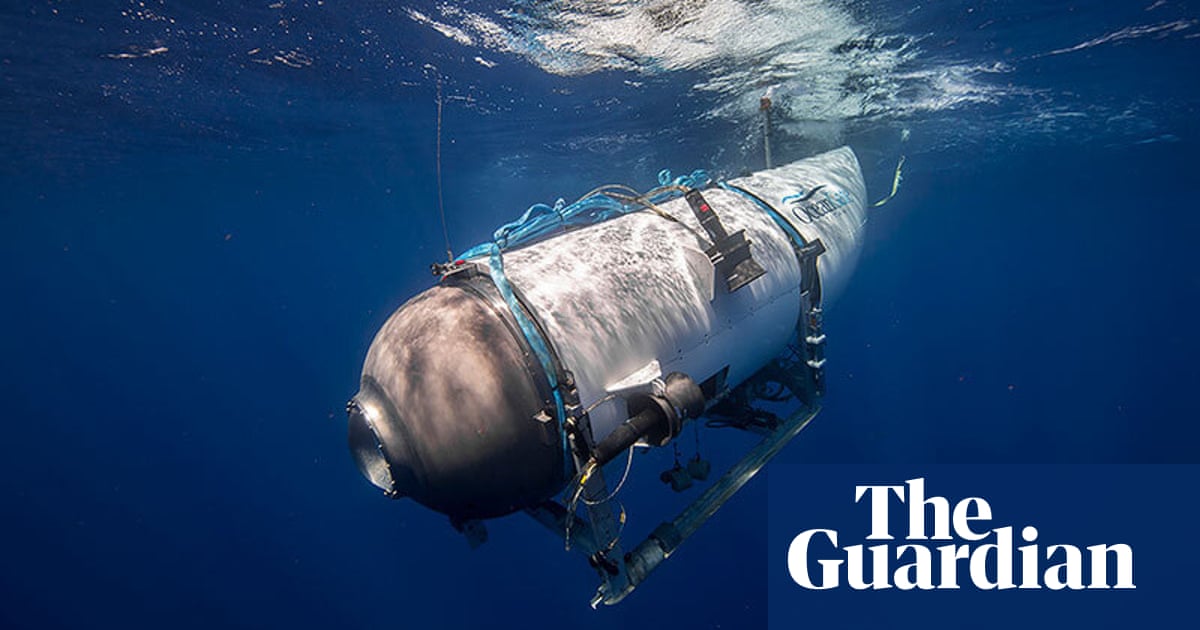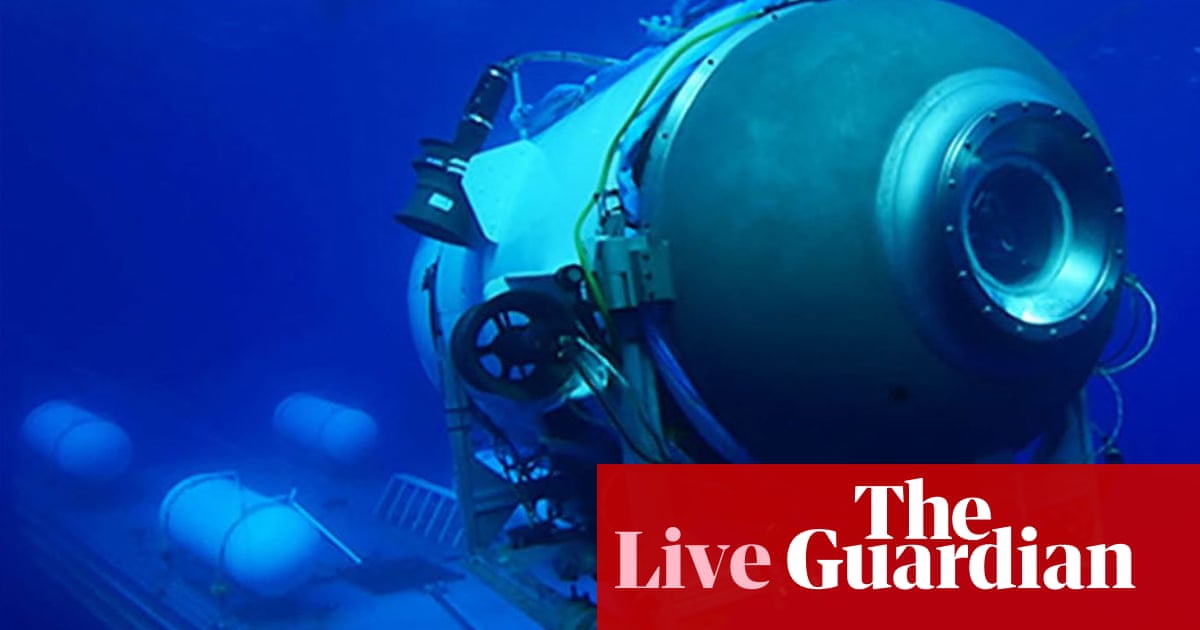
What we know of search and rescue operation after latest US Coast Guard update
Here’s a recap of today’s developments:
Rescue operations searching for the Titan submersible have focused their efforts on a remote area of the North Atlantic where a series of underwater noises have been detected. Noises were detected by Canadian P-3 aircraft on Tuesday and again on Wednesday, US Coast Guard officials said in a press conference this afternoon.
Experts have not yet identified the source of these noises, and officials have warned the sounds may not have originated from the missing vessel. Analysis of the noises has been “inconclusive”, Coast Guard Capt Jamie Frederick said. Remotely operated vehicle (ROV) searches have been deployed in the area where the P-3 aircraft recorded the noises, US Coast Guard officials said.
The five passengers on board the missing Titan sub had 96 hours of breathable air, according to its operator OceanGate’s specifications. This would mean oxygen could run out by Thursday morning, but experts say the air supply depends on a range of factors.
More ships and underwater vessels are being brought in to join the search and rescue operations, US Coast Guard officials said. Three search vessels arrived on the scene on Wednesday, including one that has side-scanning sonar capabilities. The full scope of the search is twice the size of Connecticut and 2 1/2 miles (4km) deep, Capt Frederick said.
Documents show that the sub’s operator, OceanGate, had been warned there might be catastrophic safety problems posed by the way the experimental vessel was developed. David Lochridge, OceanGate’s director of marine operations, said in a 2018 lawsuit that the company’s testing and certification was insufficient and would “subject passengers to potential extreme danger in an experimental submersible”.
A friend of Hamish Harding, the British billionaire on board the missing submersible, has called Harding “an extremely logical guy.”
Speaking to Sky News, Chris Brown said, “He’s an extremely logical guy, quite intellectual, I’m quite sure he’s going through all the possibilities. We don’t know what the situation is…
Whatever the situation is, I’m sure he’s going through all the permutations, combinations of what could be done… I wouldn’t be surprised if it was him who came up with the knock every 30 minutes so that you can tell it’s a human doing it rather than just pieces of metal banging together.”
“I’m sure he’ll be a calming influence on the other guys down there because it’s going to be everybody to keep calm and breathe as little as possible.”
A man who was on the Titan last year told Sky News that the submersible “was not safe.”
Speaking to the outlet, former passenger Arthur Loibl said that “everybody was nervous” during the 2021 expedition to the Titanic wreck.
Loibl went on to describe the cramped conditions of the vessel, saying, “There is no seat, you cannot stand, you cannot kneel, you only sit for 10 and a half hours.
Our legs are like a crab, like a snake because it was so small, nothing was comfortable.”
He also added that the vessel was “very, very cold” as the temperature outside the submersible was 4 degrees Celsius.
When asked whether he felt that the submarine was safe, Loibl replied, “No, it was not safe.”
A new documentary on the missing submersible is set to air this week.
On Wednesday, Variety reported that a new documentary is scheduled to air on the UK broadcaster Channel 5 on Thursday at 7pm local time.
The ITN-produced documentary will be called: “Titanic Sub: Lost at Sea” and will be presented by host Dan Walker.
“This program will chart everything from the exploration itself, to the rise of extreme tourism, to the rescue attempts, but above all it will tell a very human story that has captured the nation which is about 5 people, all with families, who are trapped at the bottom of the ocean. Our expertise and heritage in fast-turnaround documentaries and reputation for responsible filmmaking means we always treat such stories with great sensitivity,” ITN’s managing director for content Ian Rumsey said.
Polar Prince co-owner says "every possible effort" being put into bringing crew home
Horizon Maritime, the Canadian company that co-owns the Polar Prince research vessel that launched the Titan sub, has released a statement following the press briefing.
The company said it was working to “ensure every possible effort is put into bringing people home”.
Shahzada Dawood, the British-Pakistani businessman on board the missing Titan sub, is an explorer whose expedition to the Titanic wreck followed a yearslong passion for science and discovery, his friends and family have said.
Dawood, 48, who boarded the vessel with his 19-year-old son, Suleman, loves Star Trek and Star Wars, as well as sharing pictures of his faraway adventures, according to Ahsen Uddin Syed, a friend of Dawood who used to work with him at Engro Corporation, the chemicals-to-energy conglomerate where Dawood is the vice-chair.
“He is an explorer,” Syed told the New York Times. “Traveling, science, are part of his DNA.”
Like his father, Suleman Dawood also loves science fiction, according to a statement from Engro.
Here’s a clip from the US Coast Guard’s press briefing earlier today, where officials said rescue operations searching for the Titan submersible have focused their efforts on a remote area of the North Atlantic where a series of underwater noises have been detected.
Horizon Maritime’s chairman, Sean Leet, says his team is in “constant contact” with the crew of the Polar Prince, the Titan sub’s mothership on the surface that is also part of the search operation.
He says the ship has been supporting Titanic expeditions for “several years” and that it will “stay out until the search is completed”.
Rescue teams are “very well aware” of the “time sensitivity” around the search mission for the missing Titan sub, the Horizon chairman, Sean Leet, says.
He says the North Atlantic Gulf is always a “challenging” place but that the current weather conditions are “not overly significant”.
Leet says:
The equipment that’s been mobilised for this is the finest in the world, the most capable in the world. We have to hold on to hope.
Horizon Maritime, the company that owns the support vessel Polar Prince, which took the Titan submersible out for the expedition on Sunday, is holding a news briefing from St John, Newfoundland.
Horizon has mobilised the Polar Prince and the 94-metre Horizon Arctic to add vessel support for the search and rescue mission to find the missing sub, Sean Leet, Horizon’s chairman, says.
The marine industry in this region “is no stranger to responding to difficult incident”, he says.
We work together to ensure every possible effort is put into bringing people all the people on board. We care deeply about their wellbeing.
All of us here in Newfoundland and Labrador, Canada, the United States and around the world are unified in this work.
He says it has been a “difficult few days” for the crew on board the Titan sub and the Polar Prince.
What we know of search and rescue operation after latest US Coast Guard update
Here’s a recap of today’s developments:
Rescue operations searching for the Titan submersible have focused their efforts on a remote area of the North Atlantic where a series of underwater noises have been detected. Noises were detected by Canadian P-3 aircraft on Tuesday and again on Wednesday, US Coast Guard officials said in a press conference this afternoon.
Experts have not yet identified the source of these noises, and officials have warned the sounds may not have originated from the missing vessel. Analysis of the noises has been “inconclusive”, Coast Guard Capt Jamie Frederick said. Remotely operated vehicle (ROV) searches have been deployed in the area where the P-3 aircraft recorded the noises, US Coast Guard officials said.
The five passengers on board the missing Titan sub had 96 hours of breathable air, according to its operator OceanGate’s specifications. This would mean oxygen could run out by Thursday morning, but experts say the air supply depends on a range of factors.
More ships and underwater vessels are being brought in to join the search and rescue operations, US Coast Guard officials said. Three search vessels arrived on the scene on Wednesday, including one that has side-scanning sonar capabilities. The full scope of the search is twice the size of Connecticut and 2 1/2 miles (4km) deep, Capt Frederick said.
Documents show that the sub’s operator, OceanGate, had been warned there might be catastrophic safety problems posed by the way the experimental vessel was developed. David Lochridge, OceanGate’s director of marine operations, said in a 2018 lawsuit that the company’s testing and certification was insufficient and would “subject passengers to potential extreme danger in an experimental submersible”.
Recovering the missing Titan submersible and bringing its crew to safety in time using the latest advanced deep-sea rescue equipment would be an extremely difficult task, an expert has said.
Even if Titan is located, a successful rescue would require remote-controlled vehicles (ROVs) capable of allowing operators on the surface a clear view of the submersible’s location, any obstacles that may be present and where to attach cables capable of lifting it thousands of metres through the water.
If the Titan and its five-person crew did arrive at the Titanic wreck, they will be located 3,800 metres (12,500ft) below the surface on the seabed – too deep for most ROVs to reach. Only a “tiny percentage of the world’s submarines operate that deeply”, David Marquet, a former US Navy submarine commander, told CBC.












